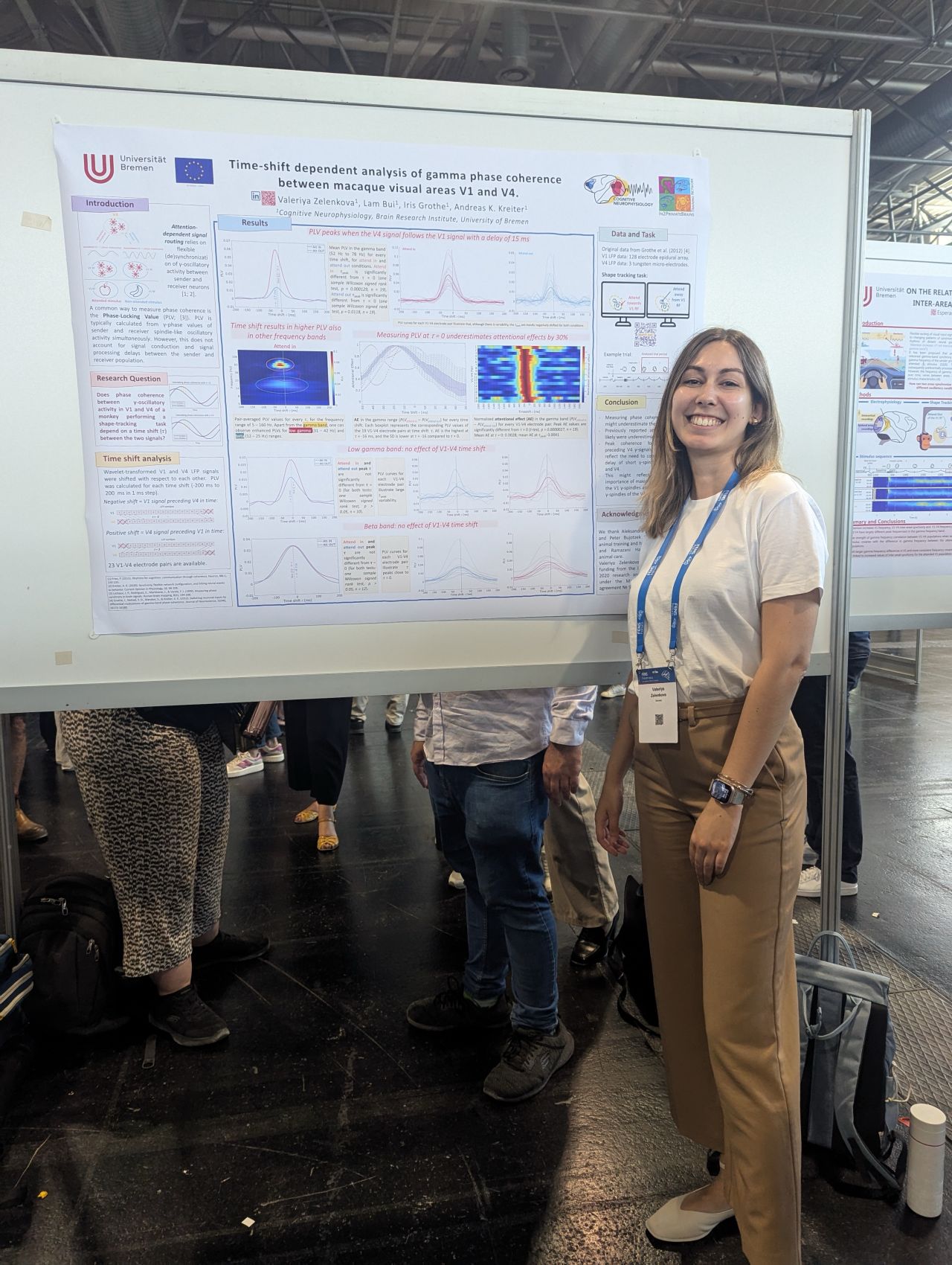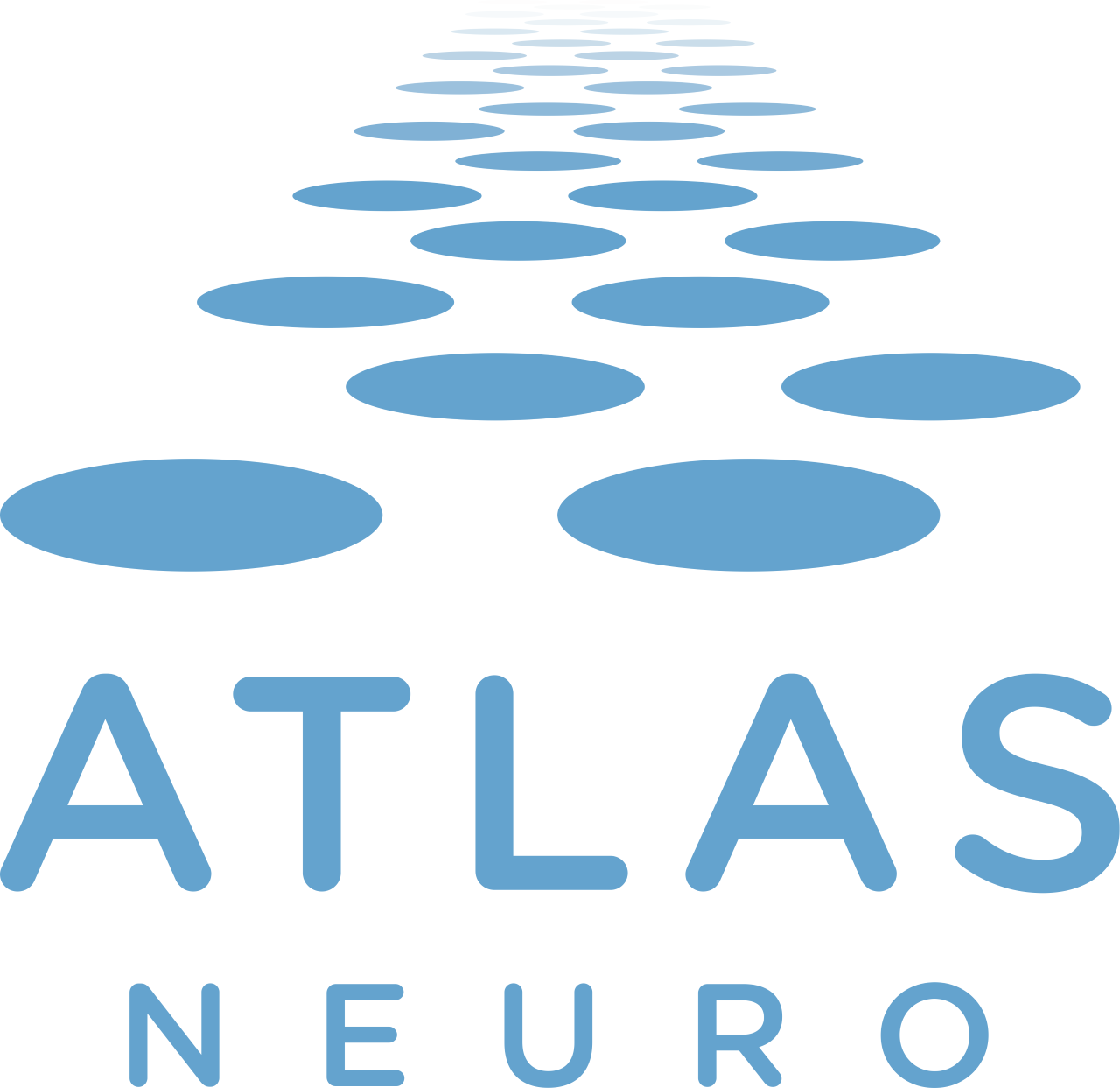Presentation (11) details
Time-shift dependent analysis of gamma phase coherence between macaque visual areas V1 and V4.
FENS 2024 in Vienna, Austria (June 25-29)
Image: Valeriya Zelenkova

Authors: Valeriya Zelenkova, Lam Bui, Iris Grothe, Andreas K. Kreiter.
Interareal phase coherence (PC) is a common way to measure the synchronization of neural activity between different brain regions based on the phase relations between their oscillatory signals (Bastos et al., 2015, Curr Opin Neurobiol). Typically, PC between two sites (e.g. between visual areas V1 and V4) is calculated at t = 0 (Lachaux et al., 1999, Hum Brain Mapp.; Grothe et al., 2012, J Neurosci.), meaning no time delay between the signals of the two sites is included in PC calculations. However, neuronal signal exchange between brain areas requires significant amounts of time. Therefore, calculating PC with zero time lag might be suboptimal. Our project aims to explore the effect of time shifts on V1-V4 PC values by re-analyzing a dataset containing LFP data from macaque areas V1 and V4 during an attention task. PC was calculated between V1 and V4 LFP signals using the method described in Lachaux et al. (1999), but shifting V1 and V4 signals with respect to each other in ms steps by up to 100ms in each direction. Our preliminary results show the highest PC for V1 signals leading V4 signals by a slight time difference of 10-20ms, possibly reflecting the time that the signal from V1 needs to travel to V4. This result suggests that the optimal time point to measure PC between two areas might not be t = 0.
















